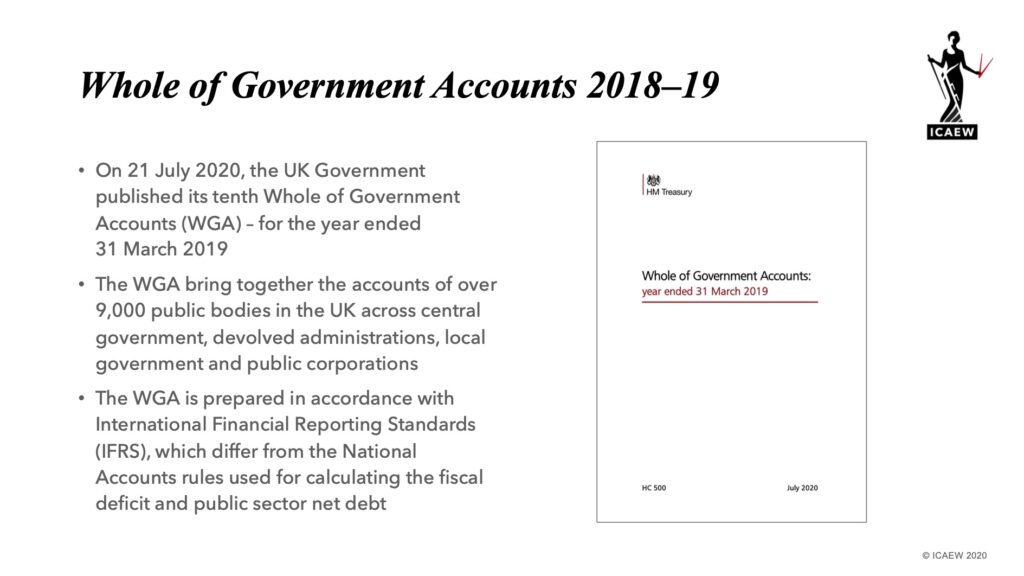24 July 2020: The UK celebrated 10 years of consolidated financial statements for the public sector with the publication of the Whole of Government Accounts for 2018-19.

The UK Government published its 10th Whole of Government Accounts (WGA) on Tuesday 21 July 2020, the day before Parliament packed up for the summer. The WGA is one of the most important public documents there is, but it was overshadowed by being put out on the busiest day for the year for government announcements, as departments rushed to finalise reports and get them out of the door while they still could.
Meeting this deadline was even more important this year, as a further delay until after the summer recess would have been extremely embarrassing. At just over 15½ months, the time taken to publish the WGA is substantially longer than the two to three months usually taken to prepare the annual reports of comparable private sector organisations. Even taking account of the additional three months caused by the pandemic, it takes a lot longer than the six to nine months that might be reasonably possible given the structure and reporting timescales applicable to public sector bodies in the UK.
Despite that, the WGA remains one of the most critical documents published by the government each year, providing a comprehensive report on the financial performance and position of the UK public sector for the 2018-19 financial year. In particular, it includes a full set of consolidated financial statements prepared under International Financial Reporting Standards (IFRS) instead of the much more limited headline fiscal measures of deficit and deficit normally used by the government when it reports on the public finances.
The WGA for 2018-19 reported revenue of £796bn and expenditure of £896bn before taking account of a £102bn credit from a change in discount rates. This gave rise to loss before the discount rate change of £100bn and an overall accounting surplus of £2bn for the year.
Total assets recorded in the balance sheet amounted to £2.1tn, including £1.3bn in fixed assets, £0.6tn of investments, cash and other financial assets, and £0.2bn in receivables and other assets. Total liabilities amounted to £4.6tn, including £2.2tn of financial liabilities, £1.9tn of employee pension obligations, £0.3tn in provisions and £0.2tn of payables and other liabilities. This means the balance sheet is in a substantially negative position, with net liabilities attributable to taxpayers of £2.5tn.
The financial statements, presented in the standard format familiar to readers of corporate reports, are accompanied by an extensive financial commentary analysing revenue, expenditure, assets and liabilities, as well as financial commitments and contingent liabilities. The overall WGA document is 200 pages long, similar in length to many corporate reports, albeit it has been expanded a little with disclosures on two major events after the balance sheet date: the withdrawal agreement with the European Union and the financial effects of the coronavirus pandemic.
The audit opinion on the financial statements continues to be qualified by the Comptroller & Auditor-General for a number of reasons, including the recurring decision not to consolidate the government-controlled Royal Bank of Scotland (now NatWest Group), a major inconsistency between central and local government in accounting for roads, the failure by the Ministry of Defence to look for embedded leases in its contracts, and using August 2018 rather than March 2019 numbers for academy schools. There are two matters of emphasis relating to the valuation of nuclear decommissioning provisions and the calculation of fair value disclosures on the Hinkley Point C nuclear electricity contract for difference.
ICAEW has put together a short summary analysis highlighting the key elements of the WGA, which you can read here.